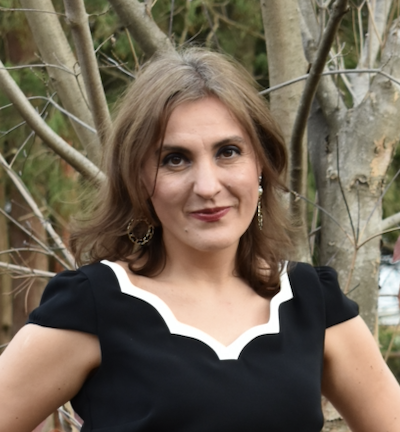Where Worlds Collide: Stepping Into the Interdisciplinary
By Jenna Cammerino
If you could pick one object that would stand to sum up life here on Earth, what would you choose? How about a song? Maybe even a word?
We’ve all stopped to wonder whether or not we are alone in this Universe and many efforts have been devoted to searching for other life out there, but not nearly as many have been focused on what we’d do after we’ve encountered that other life.

It is these kinds of questions that sit at the core of Dr. Anamaria Berea’s research. With PhDs in both economics and communications, Dr. Berea employs various theories and methods from data sciences, such as game theory and information theory, to solve questions in astrobiology.
The goal of much of her research is to understand and characterize communication as a complex system by analyzing the ways in which it is performed, as well as how it evolves, in both living and social networks.
“Communication is a major research area in all fields of science, but particularly in interdisciplinary sciences…how can we find universal frameworks and patterns of communication that can be applicable outside the context of our civilization, our species, and our history. This is important not only for how we communicate about ourselves in the Universe, but also for how we can potentially detect communication patterns in alien life, microbial or intelligent.”
Her expansive background and willingness to explore new fields has taken her to NASA, working with SETI and the Frontier Development Lab as a data scientist on solar flare predictions, and as an AI mentor, in which she uses machine learning to assess greenhouse gasses in biospheres. Not only that, but she was selected by NASA to participate in a team study of unidentified anomalous phenomena.
One of her most recent projects was on “The Message in a Bottle” in which she helped discuss the assembly of a time capsule that would serve to follow up The Golden Record, a message sent out on the Voyager spacecraft. The hope for these messages is to serve as a record for humanity in the case it reaches extraterrestrial life.
Currently, Dr. Berea is working on various projects in which she uses machine learning and computational techniques to look at human behavior. This will help to understand not only how people may perform on long space missions that attempt to discover life, but also how individuals may receive new information regarding these discoveries.
As an avid supporter of interdisciplinary studies, Dr. Berea has followed her curiosity as far as it may reach.
“I would encourage anyone to get excited by exploring fields of science, phenomena and topics that are out of their comfort zone and core interests, and to push the boundaries of thinking interdisciplinarily about any problem or question that they have. It is a lot of fun.”
It’s in the very nature of these intersections of sciences, that boundaries are pushed. After all, when you’ve entered a new realm, you have no choice but to learn something new.
Jenna Cammerino is a graduate student at Syracuse University. She has a B.S. in math and physics and is currently pursuing an M.A. in television, radio, and film. She is passionate about astrobiology and, as a YSP Research Associate, she hopes to use various outlets to share that science in an exciting and accessible way.
